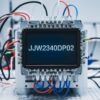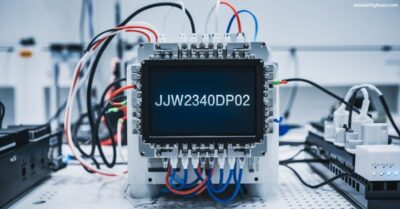Have you ever seen the 127.0.0.1:62893 cryptic code while running your computer? Not only you, but many people like you sometimes see many IP addresses while running the computer which they do not understand at all. This 127.0.0.1:62893 cryptic code may seem complicated. But if we understand their whole process properly, they can be very easy and effective for us. This blog post will demystify 127.0.0.1:62893, discuss how it works, and how to fix a common error associated with it.
What is 127.0.0.1:62893?
The address “127.0.0.1:64491 is made out of two parts These are:
IP Address (127.0.0.1): This is known as the loopback IP address, aliases for which are ‘localhost’. It’s used in testing the network software and the protocols without actually having to transmit or receive any packet from the network.
Port Number (62893): This is the specific port on the IP address that is locally utilized in the communication process. It assists in localizing a particular process or service that is running on the device.
Advantage of 127.0.0.1:62893
Development and testing: Using localhost allows a programmer to test applications without going to the Internet. It is a safe way to stay away from bugs without accessing the internet.
Helps in networking: As we all know 127.0.0.1:62893 is called LOCALHOST it helps a lot to understand networking concepts like client-server communication and TCP/IP.
Debugging: This way, developers can perform debugging on localhost to address problems linked with networks such that bugs emerging thereon may be noticed with ease.
Environment isolation: By establishing a distinct area for testing and development, Localhost helps to avoid problems with other programs.
How 127.0.0:62893 Works
127.0.0.1: This is the loopback IP address, also known as localhost, abbreviated as lo. Instead, it loops the traffic back to your computer with the use of an interface that enables you to test network applications locally.
62893: This is the port number The port number is a four-digit binary number used to address a specific segment of the computer. It designates a specific channel/endpoint on the local host that the application has to communicate via.
When you use 127.0.0.1:62893, your computers will forward the network traffic to itself, especially port 62893 to preferably handle a service or a process. This setup is helpful during the development and testing of a program since it allows one to emulate the network environment but actually does not require the environment.
Is it safe to let the public access port 62893?
It is not safe to expose port 62893 publicly. It can be risky due to various security risks. They are:
Security Issues: Memcached has many vulnerabilities when run on port 62893. Any hacker has the ability to access your system right now.
Unauthorized access: Your Memcached server could be attempted to be accessed by anybody with Internet access if you leave port 62893 open, which raises the possibility of unwanted access.
DoS Attack: Attackers and hackers can target port 62893 with DoS (Denial-of-Service) attacks, crashing your system and making it unsafe to use.
How to Fix Errors for 127.0.0.1:62893
- Restart the Application: Check that the application or service that has to be connected is currently running. If not start or restart the BCMRF.
- Verify Port Usage: Ensure that port 62893 is open and is not being used by other programs or processes. Some of the examples that can be used in identifying ports that are being utilized include the ‘netstat’ or ‘lsof’ Rename the port used in the application or modify the port in the settings if the port is used by another application.
- Adjust Firewall Settings: Check the filter settings of your firewall and ensure that it is not filtering out traffic on port 62893. One has to ensure that in the firewall settings, this port is open to allow connections on this port.
- Check Configuration Files: Check if your application’s configuration files are configured to work with 127.0.0.1 and port 62893. If there are mistakes or omissions identified in these settings, rectify them.
- Examine Network Settings: Ensure that your network scenario effectively supports loopback connections. Some networks may not permit localhost access, or may possibly limit it to certain programs only.
- Review Logs: It is crucial to examine the application logs to search for specific error messages, which may be associated with the disconnection. Logs are very helpful in diagnosing the issue for they can supply a host of contextual material that may be useful.
- Update Software: It is recommended that both the app and the operating system of the device it will be running on should have the most recent update. Often, new updates of software have more important bug fixes that might solve connection problems.
- Test with Another Port: Another thing you may try is to change the port number to, for example, port 8085 to check whether the same problem appears. This can help indicate whether the issue lies with port 62893 in particular and identify any other affected ports.
Following these steps, you should be able to detect and hopefully manage to solve errors that are associated with 127.0.0.1:62893.
Conclusion
After the above discussion, we came to the conclusion that 127.0.0.1:62893 may seem complicated, but it has a basic concept that helps a lot in development and networking. This code consists of two addresses, the code “127.0.0.1” represents localhost. While the code “62893” is the port address specific to a particular service. It helps in testing, security, debugging, and creating a secure isolated environment. By understanding this code and how to troubleshoot related errors, you can work more efficiently and safely on your computer










